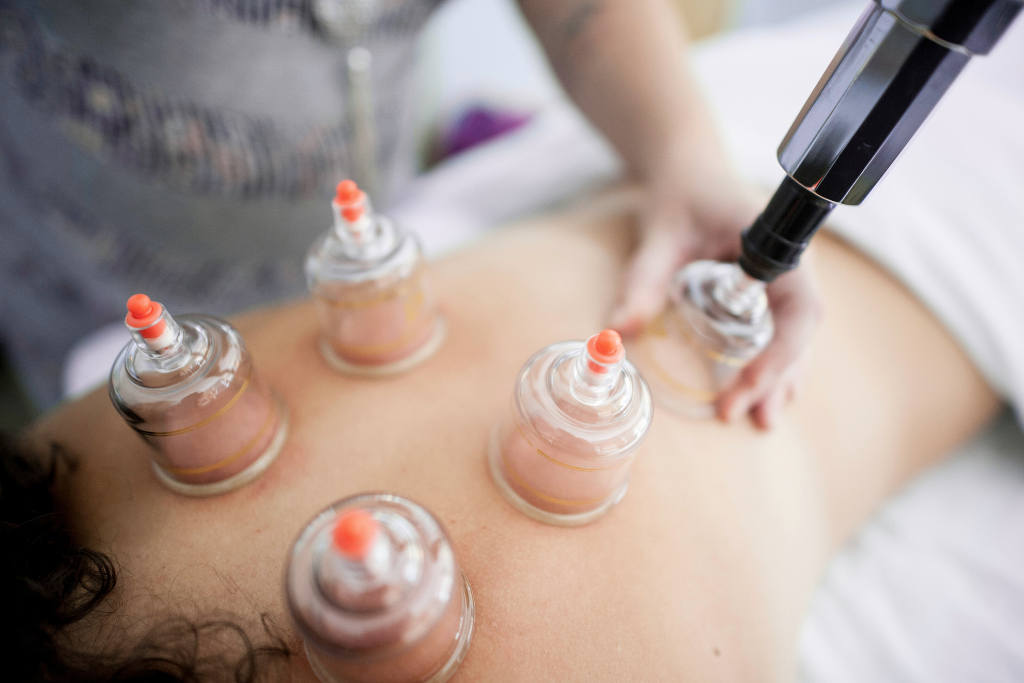Cupping Therapy
Overview, Who Is It For, and What To Expect During Your Session

Cupping Therapy is an ancient healing practice with its roots tracing back to ancient Chinese, Egyptian, and Middle Eastern cultures. This traditional therapy has evolved over thousands of years, with the earliest recorded use dating back to 1550 BC. Cupping involves the use of cups, typically made of glass, bamboo, or silicone, to create suction on the skin. The therapy is based on the principle that it can help promote blood flow, relieve pain, and stimulate the body's natural healing processes. Over the years, Cupping Therapy has gained global recognition and popularity as a holistic approach to wellness.
Who is Cupping Therapy for?
Cupping Therapy is a versatile practice suitable for a wide range of individuals. It can be beneficial for people of all ages, including children and the elderly. The therapy is particularly attractive to those seeking natural and non-invasive methods to address various health concerns. Cupping is often sought after by individuals looking for pain relief, stress reduction, and relaxation. It can also be advantageous for athletes, aiding in muscle recovery and injury prevention. Additionally, people with respiratory issues, migraines, and those interested in detoxification may find value in Cupping Therapy.
What is Cupping Therapy beneficial for?
- Chronic pain, including back pain, neck pain, and joint pain
- Muscle tension, stiffness, and recovery from physical exertion
- Poor circulation and lymphatic drainage issues
- Respiratory conditions, such as asthma, bronchitis, and congestion
- Migraines and tension headaches
- Skin conditions, including acne, eczema, and psoriasis
- Digestive disorders, such as bloating and constipation
- Stress-related conditions, including anxiety and burnout
- Inflammatory conditions, such as arthritis and fibromyalgia
- Immune system support for frequent colds or infections
Cupping Therapy is particularly beneficial for individuals experiencing pain, tension, or stagnation in the body. By stimulating blood flow and releasing muscle tension, it helps reduce pain and promote relaxation. Cupping also supports detoxification, boosts circulation, and enhances the body’s natural healing processes, making it a versatile and holistic approach to wellness.
Who can practice Cupping Therapy?
Cupping Therapy can be practiced by trained professionals who have undergone specialized training in the technique. Certified practitioners have a deep understanding of the therapy's principles, safety measures, and application. For individuals interested in learning about Cupping for personal use, various resources, such as workshops and books, are available. Self-Cupping techniques empower individuals to take a proactive role in their health and well-being. However, it is crucial to learn proper techniques and safety guidelines to avoid injury or discomfort.
How can you choose the right practitioner for Cupping Therapy for you?
Selecting a qualified and experienced Cupping Therapy practitioner is essential to ensure a safe and effective experience. When seeking a practitioner, consider their certifications, training, and reputation within the field. It's vital to inquire about their qualifications and methodology, as well as any feedback or reviews from past clients. A reputable Cupping Therapy practitioner should be transparent about their credentials and make it easy for you to make an informed choice based on your unique needs and preferences.
What does a typical session of Cupping Therapy look like?
A standard Cupping Therapy session usually begins with a consultation between the practitioner and the client. During this conversation, the practitioner gathers information about the client's health concerns and objectives. The client is then positioned comfortably, and the practitioner creates suction within the cups using heat or a mechanical pump. The cups are placed on specific areas of the body, often the back or shoulders, and left in position for a few minutes. The gentle suction can help to release muscle tension and improve blood flow. After removing the cups, the practitioner may apply oil or lotion and perform a light massage. A typical session lasts approximately 30 to 45 minutes.
What does a virtual session of Cupping Therapy look like?
Virtual Cupping Therapy sessions have become more accessible in recent times. These sessions are typically conducted via video conferencing platforms, allowing the practitioner to guide the client in self-Cupping techniques. During a virtual session, the practitioner will provide instructions on how to create suction and apply the cups on specific areas of the body. The client can ask questions and receive real-time feedback through the virtual platform. This format offers flexibility for individuals who prefer to experience Cupping Therapy from the comfort of their own space.
What can you expect after a session of Cupping Therapy?
After a Cupping Therapy session, it is common to experience some temporary skin discoloration or bruising where the cups were applied. These marks typically fade within a few days. Many individuals report feeling relaxed and experiencing immediate relief from pain or muscle tension. Over time, regular sessions can contribute to reduced stress, improved circulation, and an enhanced sense of well-being. It's important to stay hydrated and rest after a session to allow the body to fully absorb the benefits of Cupping Therapy.
How Can I Find Practitioners in This Modality?
Below are some of the practitioners in the Heallist Network who offer services in this area:
Ready to Begin Your Healing Journey?
The Heallist Network connects you with a diverse community of holistic practitioners across 200+ modalities—from energy work and alternative medicine to coaching and spiritual guidance. Explore, connect, and find the support that resonates with you.
